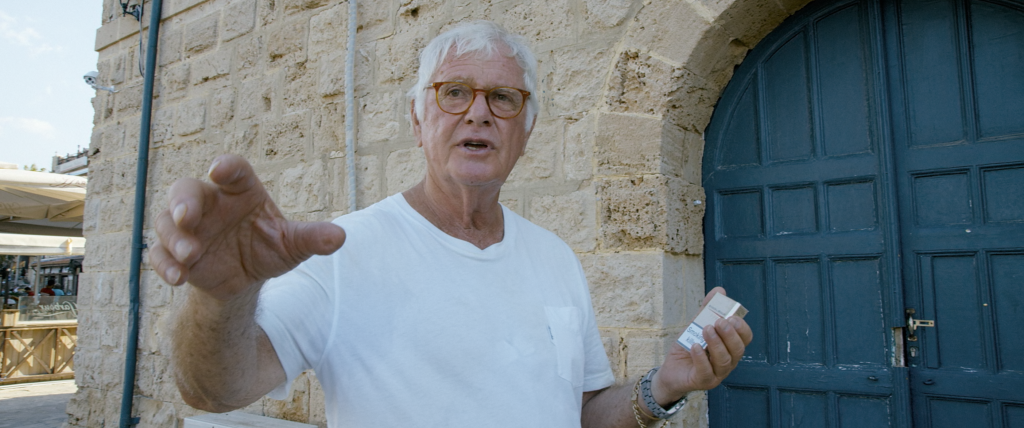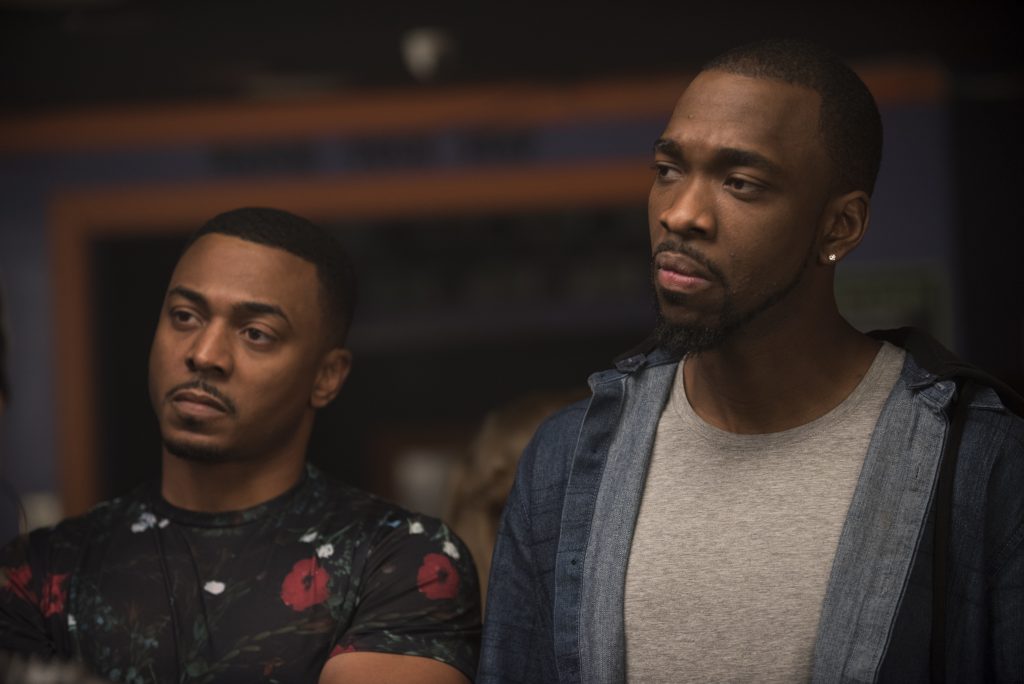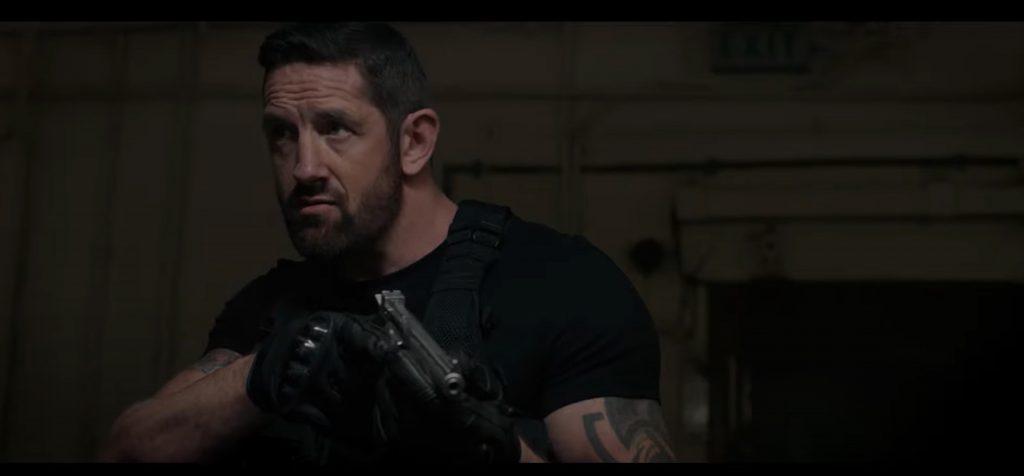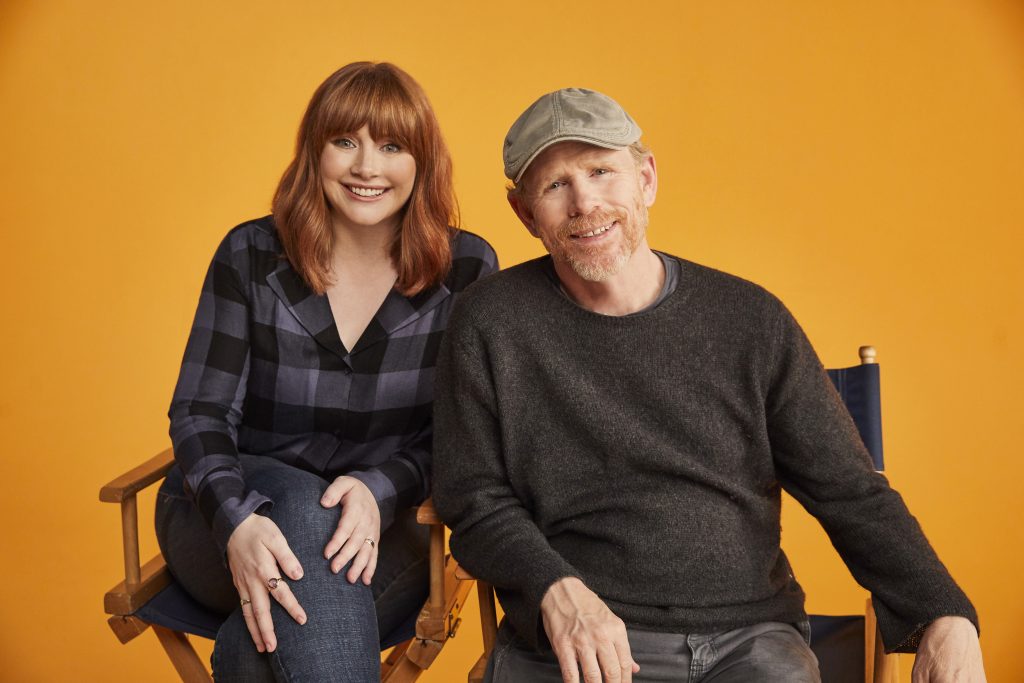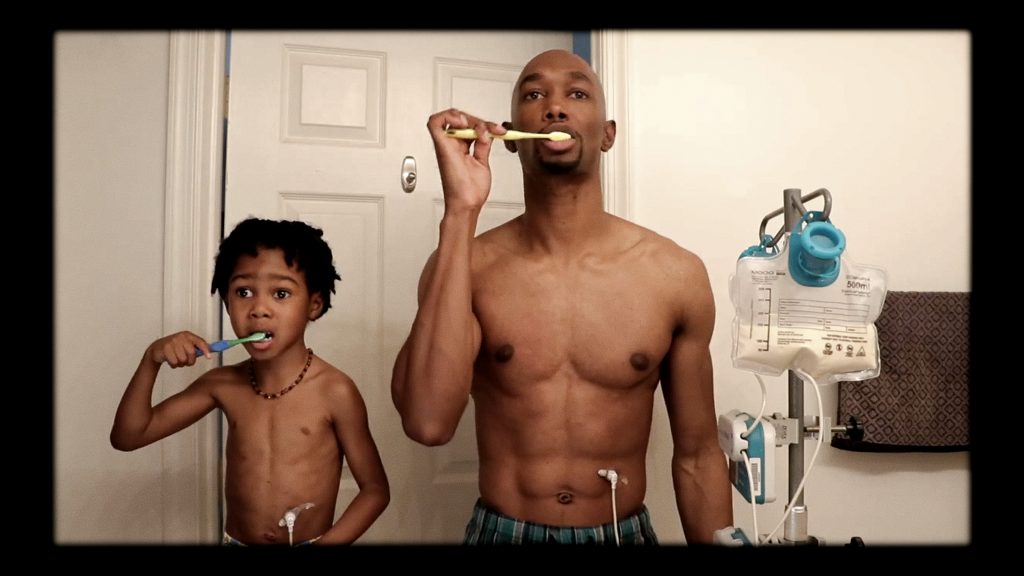June 26, 2020
by Carla Hay

“Ella Fitzgerald: Just One of Those Things”
Directed by Leslie Woodhead
Culture Representation: The documentary “Ella Fitzgerald: Just One of Those Things” features a racially diverse (mostly African American and white) group of people (mostly music artists and writers) discussing the life and legacy of singer Ella Fitzgerald.
Culture Clash: Fitzgerald experienced damaging racism, and her love of touring took a toll on her personal life.
Culture Audience: “Ella Fitzgerald: One of Those Things” will appeal mostly to people who are fans of jazz and biographies of legendary singers.

Ella Fitzgerald left a unique legacy in music that can be compared to very few artists. She mastered the genres of swing, bebop, American standards and, of course, jazz. The well-made documentary “Ella Fitzgerald: Just One of Those Things” (directed by Leslie Woodhead and narrated by Sharon D. Clarke) is perhaps the definitive biography film of Fitzgerald, who died in 1996 at the age of 79. Although the film does not reveal anything new about her, it does have some great archival material and a well-rounded group of people who are interviewed.
Fitzgerald was born in Newport News, Virginia, but she was raised primarily in New York state. Her family moved to Yonkers, New York, in 1919, when she was 2 years old. Although she grew up in poverty, she discovered a love of the arts at an early age, and she helped earn money for her family as a dancer and as a singer.
Her teenage years were very turbulent. When Fitzgerald was 13, her beloved mother Tempie died. Ella Fitzgerald biographer Judith Tick says in the documentary the death of Ella’s Fitzgerald’s mother was “a devastating blow, because her mother had been the continuity in her life, and Ella was lost.”
Fitzgerald was sent to reform school in 1933, where she was beaten and experienced other forms of abuse, which people in the documentary say was doled out the harshest to the black kids in the reform school, compared children of other races. Her experiences at the reform school were so traumatic for her, that Fitzgerald never spoke publicly about what happened. However, the documentary shows records from the school with hand-written notes by school authorities that describe Fitzgerald as “ungovernable”—an indication that, despite any abuse she suffered there, her spirit could not be broken.
Yonkers is in close-enough in proximity to New York City that Fitzgerald was able to go to the big city and experience the culture of New York City’s Harlem neighborhood, which was the epicenter for African American music in the Northeast. In November 1934, Fitzgerald made her Apollo Theater singing debut on Amateur Night. And, as the famous story goes, she was was initially booed by the audience, but then she won them over with her voice.
The documentary includes an interview with dancer Norma Miller, who was in the audience for Fitzgerald’s fateful Apollo Theater debut, which was the first time that a very nervous Fitzgerald had ever sung in public. “We booed her,” remembers Miller. “They were introducing somebody we didn’t know. We were a bunch of rowdy teenagers in the balcony … Can you imagine? We booed Ella Fitzgerald!”
Fitzgerald’s son Ray Brown Jr. adds, “It was one of those defining moments, like ‘I’m here. I have to do something. Something has to be accomplished.’ And to be able to pull something out of yourself that’s so magical, that’s pretty amazing.”
Miller remembers the turning point when the audience’s reaction went from jeers to cheers: “We heard a sound [her voice]. It was so perfect. She shut us up so quick, you could hear a rat piss on cotton!”
From that Apollo stage debut, Fitzgerald then began hanging out in New York City even more. She would meet two of the people who would have a major impact on her early music career: Louis Armstrong (who was a big inspiration for her) and drummer/band leader Chick Webb, a dwarf-sized hunchback who didn’t let his unusual physical appearance deter him from being a larger-than-life force in the music business.
Webb had an all-male band and was very reluctant at first to let Fitzgerald in the group. He had two concerns over including her in the band: Her safety and her sex appeal. On the one hand, Webb wasn’t sure if Fitzgerald would be the target of sexual misconduct as the only woman in a group of randy men. On the other hand, Webb thought that Fitzgerald wasn’t attractive enough to appeal to the band’s audience. It’s mentioned in the documentary that Webb cruelly called her “ugly,” and he and other people would sometimes taunt her over her weight.
In the end, talent won out, and Fitzgerald became part of Webb’s band. It was the big break that led to her first mainstream hit “Mr. Paganini.” She experienced even bigger success with the classic “A Tisket A Tasket,” one of her signature songs.
Smokey Robinson says that “A Tisket A Tasket” was the first Ella Fitzgerald song her remembers hearing: “My sisters used to play that all day long, every day.” The massive crossover success of the song led to Fitzgerald making her film debut in the 1942 movie “Ride ‘Em Cowboy.” In the film, she sang “A Tisket A Tasket” on a bus where all the people on the bus except for Fitzgerald were white. The irony is that in real life in that era, she would’ve been relegated to the back of the bus in many places in the U.S., where racial segregation was legal at the time.
This segregation affected Fitzgerald’s life in many different ways. In terms of her career, she (like other black entertainers) could not perform in certain venues that refused to have black performers. She also wasn’t allowed on certain TV programs and radio shows. And even the music she performed early in her career (swing and bebop) was considered “race” music at the time.
Her physical appearance was also harshly judged in other ways. Female entertainers were expected to be thin, glamorous and sexy (not much has changed since those days), and “Ella did not fulfill those expectations,” says writer Margo Jefferson. Her success is testament to how Fitzgerald was a groundbreaking nonconformist in her field, Jefferson adds.
Fitzgerald was also a trailblazer when, after Webb died at the age 30, she took over his band and became the leader, and the band was renamed Ella and Her Famous Orchestra. The documentary mentions that some of the band members resented having a woman as their leader, so there was some inevitable friction. After the group disbanded during World War II, Fitzgerald’s popularity waned.
But she was a master reinvention, so Fitzgerald transitioned from swing to bebop music. It was by performing bebop that she was able to showcase her brilliant ability to have her singing voice do solos on the same level as musical instrument solos. Jazz pianist Kenny Barron comments, “She had a great ear [for music].”
She started hanging out with Dizzy Gillespie and eventually toured with Gillespie and his band. It was while touring with Gillespie that Fitzgerald fell in love with Gillespie’s bass player Ray Brown. Fitzgerald and Brown married in 1947, and adopted the son of Fitzgerald’s half-sister and named him Ray Brown Jr. (The documentary does not mention Fitzgerald’s first husband, Benny Kornegay. Their 1941 to 1943 marriage ended in an annulment.)
Fitzgerald’s marriage to Brown ended in divorce in 1953, but the former couple still worked together for many years afterward. It’s mentioned several times in the documentary that Fitzgerald was a workaholic who loved to perform and travel. That heavy touring schedule, which she kept up for several decades, took a toll on her personal life. By her own admission, she could never be the type of wife and mother than many people expected her to be, so it was difficult to find a love partner who could understand how devoted was to music.
Another transitional period in Fitzgerald’s life and career was when Norman Ganz became her manager in the mid-1940s. He wanted Fitzgerald to cross over to an even broader audience, so it was his idea to have Fitzgerald perform standards from the Great American Songbook. Ganz also launched Verve Records, as a showcase for Fitzgerald. It allowed her to appeal to a more affluent and sophisticated audience, which opened the doors for her to perform at venues that were traditionally off-limits to black performers.
And sometimes those doors could only be opened because the venues were shamed into doing so. The Mocambo nightclub refused to book Fitzgerald, until Marilyn Monroe, who as a big fan of Fitzgerald, famously said that she and other celebrities would boycott the club unless Fitzgerald was allowed to perform there.
Granz was also a tireless advocate in pushing for desegregation not only for Fitzgerald but also for other people of color. Granz’s biographer Tad Hershon comments on Granz: “He saw the evils of segregation, and was determined to campaign against segregation in jazz music.” When Fitzgerald moved to Beverly Hills in California, she couldn’t buy a home there, due to racial discrimination, so Granz had to buy the home and put it in his name.
Although Granz was undoubtedly a loyal champion for Fitzgerald, he’s also described in the documentary as “nasty” and “controlling.” Not only did he want a tight grip on Fitzgerald by dictating what she could and could not do, he also alienated other artists (such as Gillespie and Sinatra) because of his bossy ways. When Sinatra refused to take Granz’s orders, Granz spitefully told Fitzgerald that she couldn’t work with Sinatra anymore.
Granz stood by Fitzgerald when she and members of her entourage were arrested in Houston in 1955, just because some members of the entourage were shooting dice in her dressing room. The documentary includes a snippet of an audio interview from Fitzgerald where she said that even though the arrest was an obviously racist set-up and a humiliating experience, the irony is that people at the police department still asked for her autograph. Granz later sued the Houston police department for reimbursement of the bail money.
One of the rare gems in the documentary is a never-broadcast clip from a radio interview that Fitzgerald did in the 1960s, when civil-rights protests were very much at the forefront of African American struggles for equality. In the interview, Fitzgerald talked about how it bothered her that when she traveled outside the U.S., particularly in Europe, people couldn’t understand why the U.S. was so segregated and that even someone as famous as Fitzgerald would be treated like a second-class citizen in certain parts of the U.S.
In the interview, Fitzgerald also said that die-hard racists probably won’t change their minds, but younger generations might have different beliefs about race. And Fitzgerald mentioned that she had to speak out about these issues, because she felt it was the right thing to do, even though some people think that entertainers shouldn’t talk about politics.
At the end of the interview, Fitzgerald asks where the interview will be heard. When the interviewer tells her it will be heard across many states, she replies that she might get in trouble for what she said, but she needed to say it. Perhaps her comments were considered too “radical” at the time, and maybe that’s why the interview never aired.
Tony Bennett comments in the documentary about Fitzgerald: “She never made a political statement, except when I heard her say three words. And it was the most complete definition of the complete ignorance of the world and the way they treat African Americans. She said, ‘Tony, we’re all here.’ In three words, she said the whole thing.”
In addition to her problems with racism, Fitzgerald was experiencing issues as a mother who was frequently away from home. Her relationship with her son Ray suffered, especially during his rebellious teen years, when he was shipped off to Catholic military school. When Ray moved out of the family home in the 1970s, he was estranged from his mother for about 10 years afterward. Fortunately, they reconciled, and he speaks of his mother in very loving ways in the documentary.
Other people interviewed in the film (who all predictably praise Fitzgerald) include music artists Patti Austin, Johnny Mathis, Jamie Cullum, Laura Mvula, Cleo Laine, Andre Previn (who died in 2019), Itzhak Perlman and drummer Gregg Field. Also weighing in with their thoughts are jazz writer Will Friedland, Newport Jazz festival founder George Wein and Jim Blackman, a longtime Fitzgerald fan who was her last tour manager.
During the course of her influential career, Fitzgerald won almost every possible prestigious award for music. She earned the nicknames First Lady of Song, Queen of Jazz and Lady Ella. But this documentary also beautifully shows that her greatest accomplishment is how she paved the way for so many other artists and created a legacy that will continue to influence countless generations.
Eagle Rock Entertainment released “Ella Fitzgerald: Just One of Those Things” in select U.S. virtual cinemas on June 26, 2020.
https://www.youtube.com/watch?v=or1kqkeGXrI




